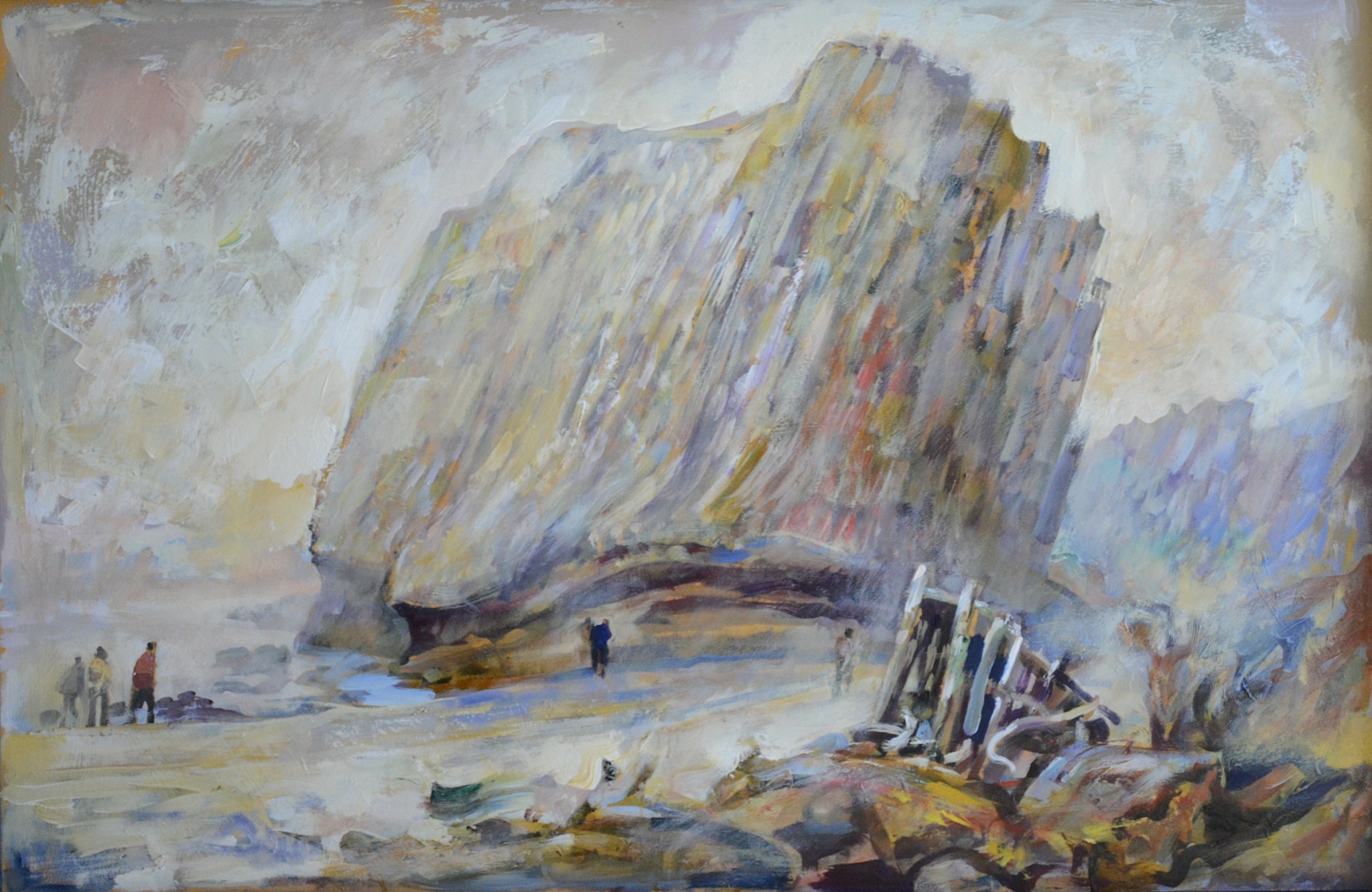Alright – so today we’ve got the honor of introducing you to Erik Sandgren. We think you’ll enjoy our conversation, we’ve shared it below.
Erik, looking forward to hearing all of your stories today. What’s been the most meaningful project you’ve worked on?
The curator at Maryhill Museum in Washington reached out to me about a year and a half ago with a special invitation to contribute to an exhibit that celebrates the iconic Columbia River. Offering both a historical and a contemporary lens, the exhibition is titled, The Columbia River: Wallula to the Sea. Sixteen on-site paintings were selected plus a big one summarizing that stretch of the Columbia River in a single composition entitled Wallula to the Sea. Across four panels Wallula to the Sea evokes a range of geology, ecosystems, and cultural histories. Hung next to each other, the panels are at once discrete and integrated. They grew out of the year of onsite painting that deepened my feel for the Big River. My experience outdoors demanded a synthesis of multiple views and multiple vantage points; both jumps and transitions as the eye explores its spaces. I am grateful for the generosity and imagination of the curator who stimulated unexpected and creative responses to the exhibition concept.


Erik, before we move on to more of these sorts of questions, can you take some time to bring our readers up to speed on you and what you do?
I grew up painting and drawing then rediscovered it as a passion at Yale College. In that vibrant art department I discovered new roots for my early training and exposure to painting and printmaking. Landscape has become the vehicle for ideas, observations and feelings that are important to me. I wish to share them as landscapes that project our cultural selves. In the landscape I am free to make discoveries that combine compositional force with place. I continue braiding these strands, bringing my observational work ever closer to my dreamed, envisioned and imagined worlds. I’m dedicated to the region of the Pacific Northwest, after having also painted ordinary and sacred spaces of Western Europe, New England, and Maryland. I am most proud of bringing to the future some skills and traditions imparted to me as a teacher, painter, and printmaker.
My father was a noted Pacific Northwest painter and OSU art professor. Years ago he asked me to join him as co-instructor of his annual Sandgren Oregon Coast PaintOut. After two decades I continue to lead it in his absence. This has offered a significant opportunity, in the public eye, to learn, refine, and apply both painting and teaching skills — how to keep the magic alive in both teaching and painting. We learn to savor the unique and remain open to the spontaneous, while employing all the advantages of craft and tradition. Amidst the challenges of painting nature onsite, I model painters to begin with well-organized compositional layouts that offer them both direction and freedom to adjust and elaborate. First, acquire good technique, then abandon yourself to inspiration.


Let’s talk about resilience next – do you have a story you can share with us?
Early on it’s the challenges of staying with school, remaining a self-starter, and getting over being just a good student. A freelance artist’s life is like a poem, which Robert Frost describes as “believed” into existence. In order to find yourself you have to risk a bunch of mistakes. As Dolly Parton has said, find out what you do best and then start doing it on purpose. All I really have to offer are my particular enthusiasms and energy–the dual capacity to generate things and to revise them.
My work is rooted in specific traditions, yet I’m continuously pushing myself to make it distinct from my father’s legacy. I realize that, years from now, my art may still be seen as part of his generation’s influence, but I’m undeterred by that. Even with the art world’s shift toward more post-modern expressions and ideologies, I remain committed to the vision I have evolved about an inhabited nature, determined to carve a unique path forward. It’s this resilience that drives me to find new ways to share and celebrate my work, no matter how competitive the milieu may be.


Learning and unlearning are both critical parts of growth – can you share a story of a time when you had to unlearn a lesson?
Those that can’t do, teach… what HOGWASH! Joseph Albers and Hans Hoffman were famous creatives who made themselves into legendary teachers. All my mentors have been inspiring teachers and excellent practitioners as working and exhibiting artists. These contrasting roles enhanced their work. Good teaching is about communicating clearly while good art is about generating mystery. Taking from both, I have sought to teach clearly in a way that keeps the magic alive and to paint mysteries with mental rigor.
Furthermore, my teaching has clarified my painting. I seem to do good work while demonstrating, as if motivated by “the proof is in the pudding,” or “ practice what you preach.” Being a college instructor allowed me to develop studio work free of the gallery restraints developed in a visual arts world context where an artist’s style functions as brand.
Contact Info:
- Website: https://www.eriksandgren.com
- Instagram: Sandgrenart
- Facebook: https://www.facebook.com/eriknsandgren/




